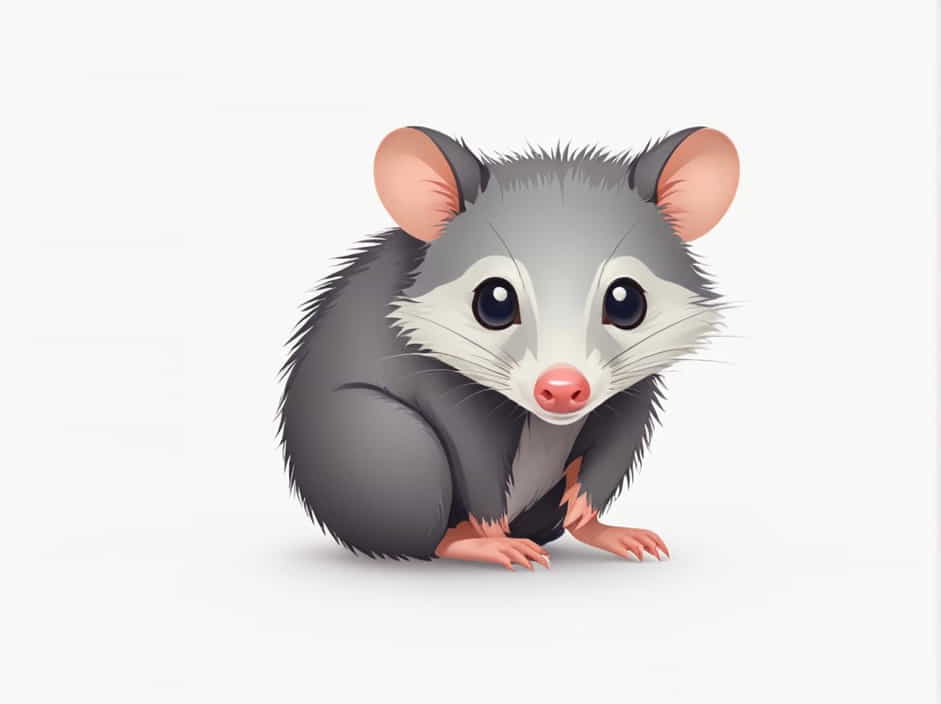The opossum is a fascinating creature that holds a unique title-it is the only marsupial native to North America. While marsupials are commonly associated with Australia, such as kangaroos and koalas, the Virginia opossum (Didelphis virginiana) thrives in the United States, Canada, and Mexico.
Opossums are nocturnal, adaptable, and misunderstood animals that play a vital role in the ecosystem. Despite their somewhat eerie appearance, they provide natural pest control, help clean the environment, and rarely carry rabies. This topic explores the biology, behavior, habitat, and importance of opossums in North America.
What is a Marsupial?
Marsupials are mammals known for their unique reproductive system. Unlike placental mammals, marsupials give birth to underdeveloped young, which then crawl into the mother’s pouch (marsupium) to continue growing.
While most marsupials live in Australia, a few species exist in the Americas, with the Virginia opossum being the only one found in North America.
Key Characteristics of Marsupials
-
Short gestation period.
-
Pouch for carrying and nursing young.
-
Unique bone structure compared to placental mammals.
The Virginia Opossum: North America’s Only Marsupial
Physical Characteristics
-
Size: About the size of a house cat (13-37 inches long).
-
Weight: 4 to 15 pounds.
-
Fur: Grayish-white with a coarse texture.
-
Tail: Long, prehensile, and hairless, used for gripping branches.
-
Face: White with a pointed snout and black eyes.
Opossums are often mistaken for large rats, but they are mammals with unique adaptations that help them survive in various environments.
Adaptability and Habitat
Opossums are highly adaptable and can live in forests, swamps, suburbs, and even urban areas. They prefer environments with trees and water sources, but they can also be found scavenging in garbage cans in cities.
They are omnivores, meaning they eat a wide variety of foods, including:
-
Insects and small rodents.
-
Fruits and berries.
-
Dead animals (helping clean the environment).
-
Human leftovers and pet food.
Why Are Opossums Important?
1. Natural Pest Control
Opossums eat ticks, cockroaches, rats, and snakes, making them excellent natural pest controllers. A single opossum can consume thousands of ticks in one season, reducing the risk of Lyme disease.
2. Cleaning the Environment
By feeding on dead animals (carrion), opossums help prevent the spread of disease and keep ecosystems clean.
3. Snake Defense
Opossums are immune to snake venom from rattlesnakes and cottonmouths. They help control snake populations by hunting and eating venomous species.
4. Low Rabies Risk
Unlike many wild mammals, opossums rarely carry rabies due to their low body temperature, which makes it difficult for the virus to survive.
Opossum Behavior: More Than Just “Playing Dead”
One of the most famous behaviors of opossums is “playing dead” (thanatosis). When threatened, an opossum may:
-
Collapse onto its side.
-
Let its tongue hang out.
-
Slow its breathing to appear lifeless.
-
Release a foul-smelling odor to mimic decay.
This involuntary response helps deter predators, as many animals avoid eating dead prey.
Nocturnal and Solitary Lifestyle
Opossums are nocturnal, meaning they are most active at night. They are also solitary animals, typically avoiding interactions with others except during mating season.
Opossum Reproduction and Lifecycle
Short Pregnancy, Long Pouch Time
Opossums have a gestation period of just 12-13 days. After birth, the tiny, underdeveloped babies crawl into the mother’s pouch, where they continue growing for about two months.
Large Litters, High Mortality
A mother opossum can give birth to up to 20 babies at a time, but only a few survive, as they must compete for space in the pouch. Those that survive stay with the mother for about four months before becoming independent.
Short Lifespan
Opossums have a relatively short lifespan, living only 2-4 years in the wild due to predators, disease, and human-related dangers like cars.
Opossums and Human Interaction
Are Opossums Dangerous?
Opossums are not aggressive and rarely attack humans or pets. When confronted, they are more likely to play dead or run away.
Do They Carry Diseases?
While opossums can carry fleas and parasites, they have a low risk of spreading rabies and other serious diseases.
How to Keep Opossums Away from Your Home
If opossums become a nuisance, here are some ways to deter them:
-
Secure trash cans to prevent scavenging.
-
Remove pet food from outside at night.
-
Seal entry points under porches or sheds.
-
Use motion-sensor lights to scare them away.
Fun Facts About Opossums
-
Oldest Surviving Mammal Order: Opossums belong to an ancient group of mammals that have existed for over 70 million years.
-
Smart Problem-Solvers: Studies show that opossums have excellent memory, outperforming rats, dogs, and even some primates in certain tests.
-
Strong Immune System: They can survive venomous snake bites and resist many diseases that affect other mammals.
-
Great Climbers: Their prehensile tails and sharp claws make them excellent at climbing trees.
-
Unusual Defense Mechanism: "Playing dead" is not a conscious choice but an automatic, involuntary reaction.
The Virginia opossum is a remarkable creature, serving as North America’s only marsupial. Though often misunderstood, they play a vital role in the ecosystem, from natural pest control to cleaning up dead animals.
Despite their eerie appearance, opossums are harmless, highly adaptable, and beneficial to humans. Understanding their behavior and ecological contributions can help people appreciate and coexist with these unique mammals.
